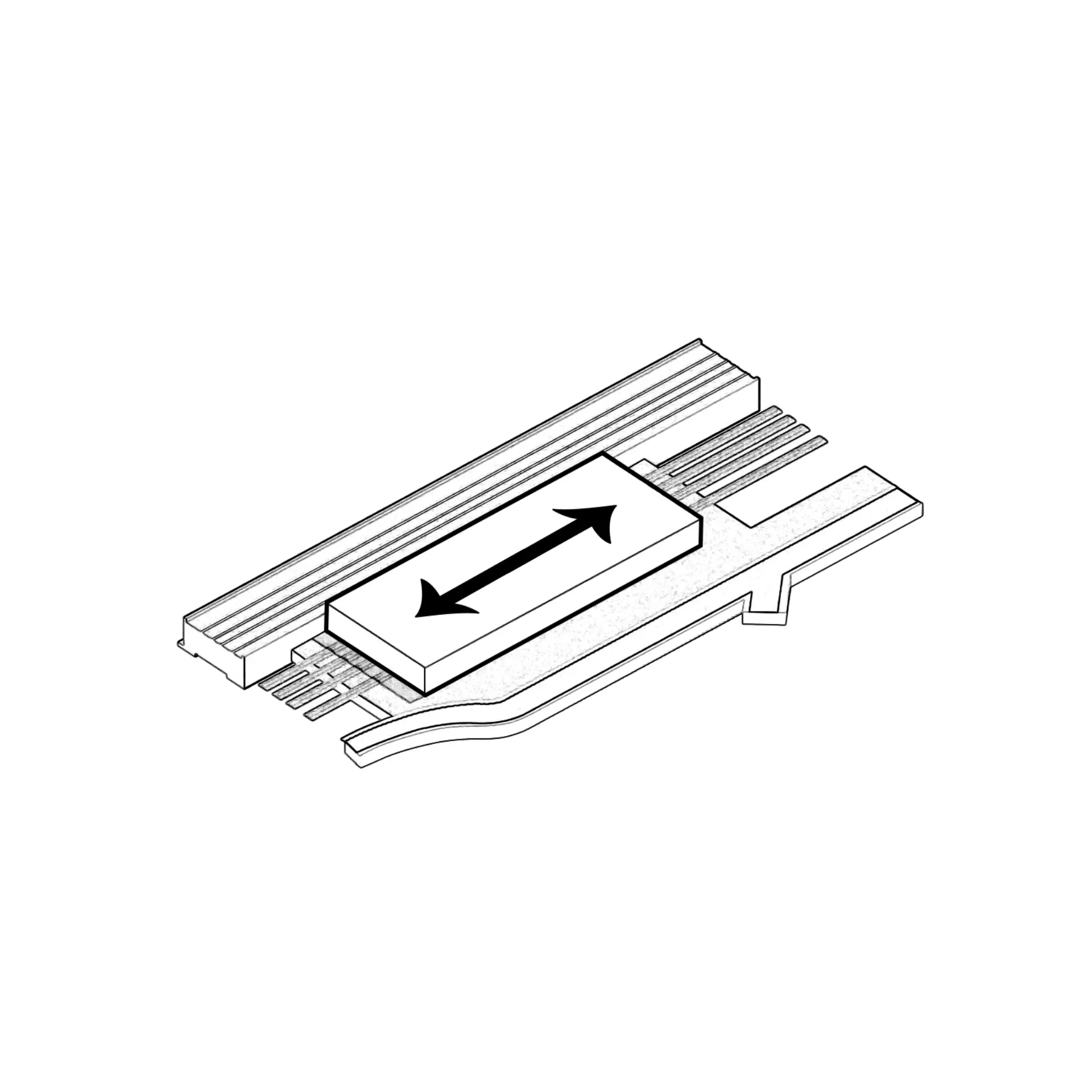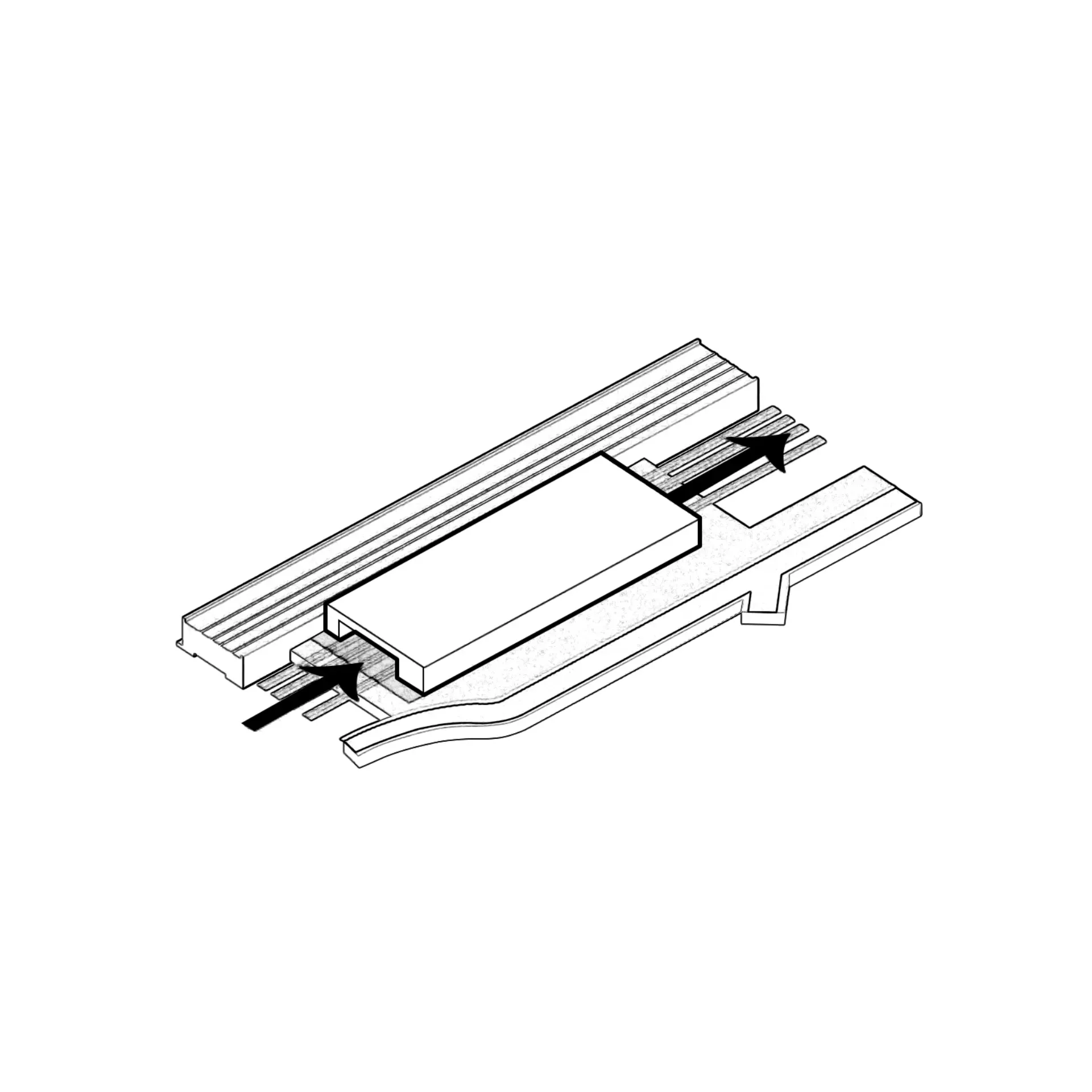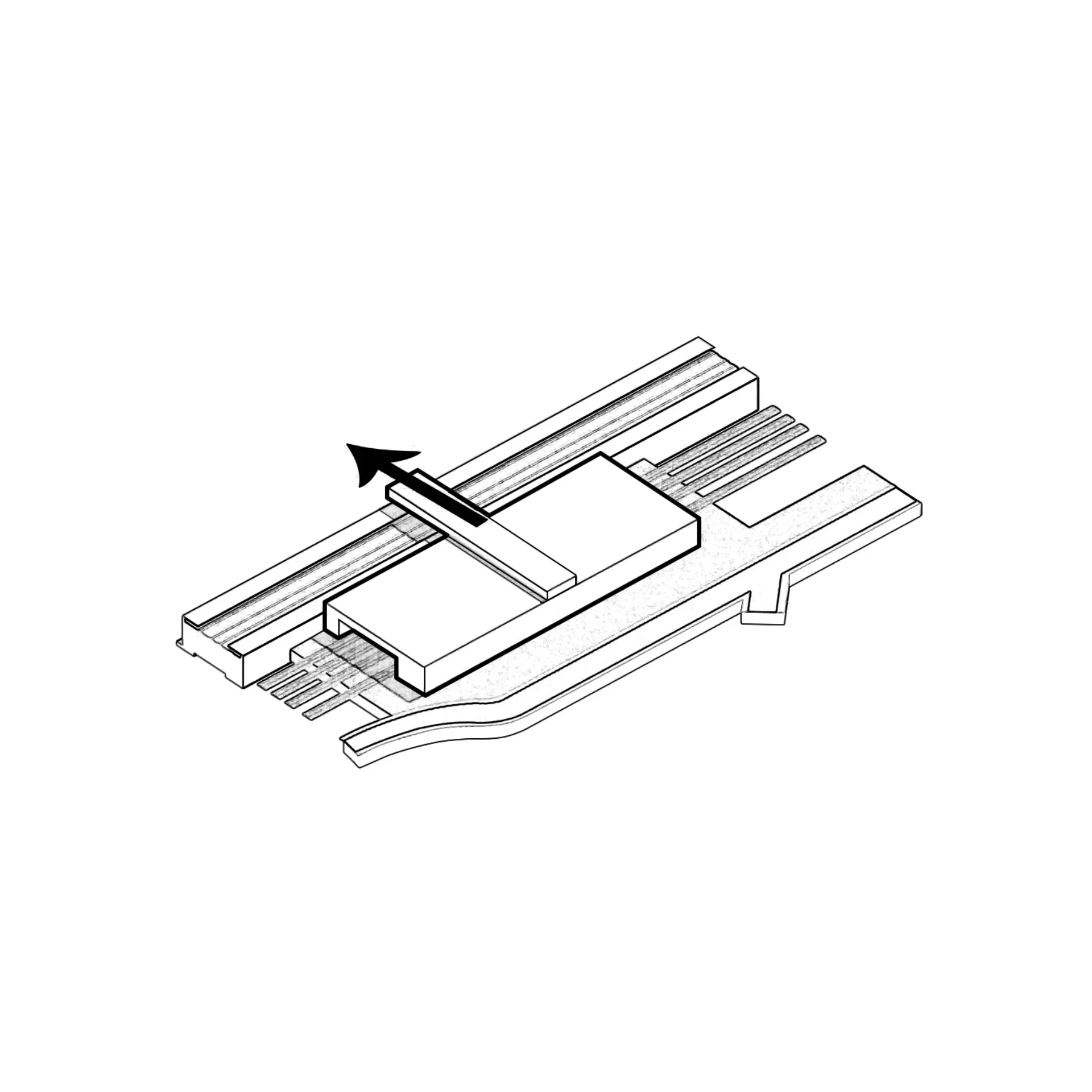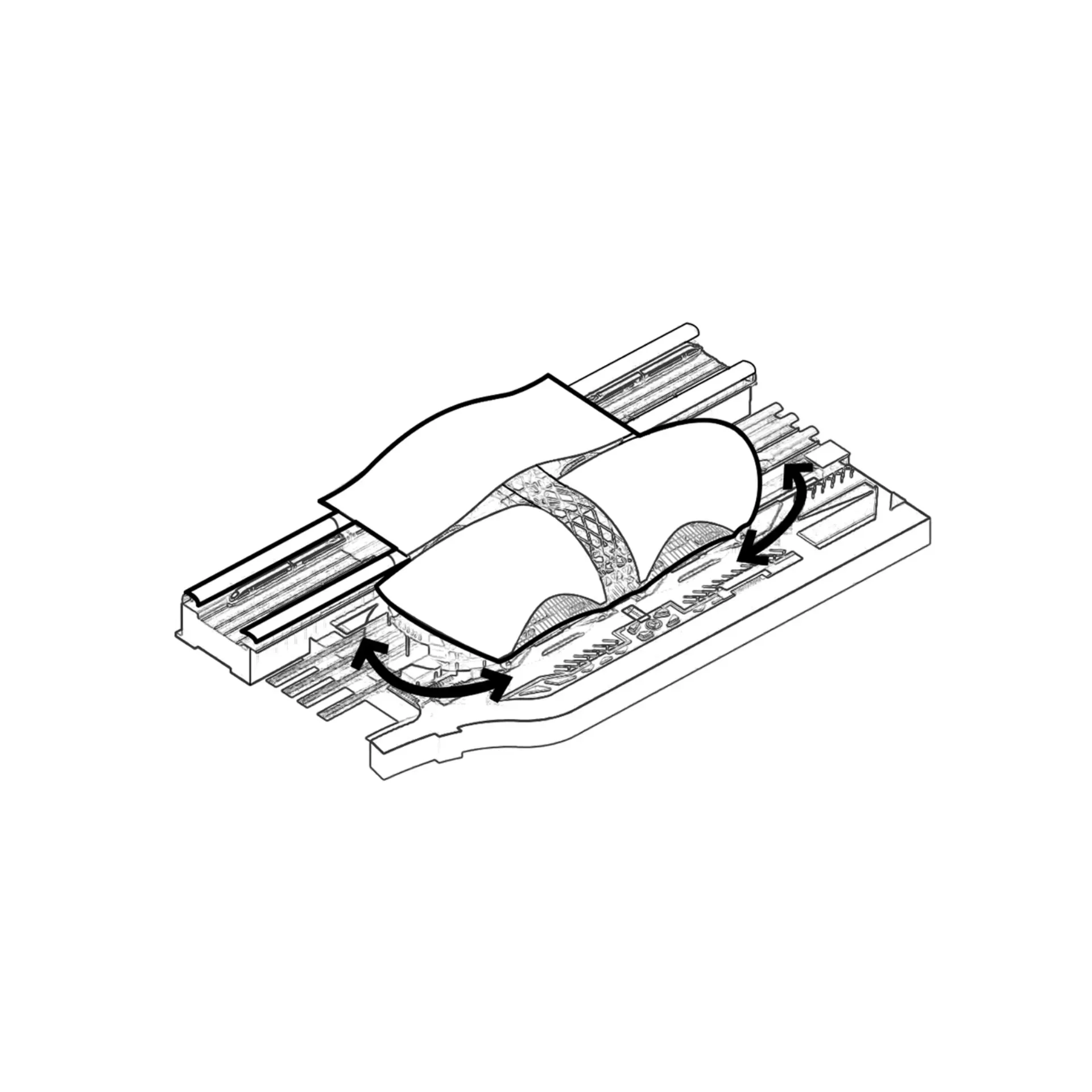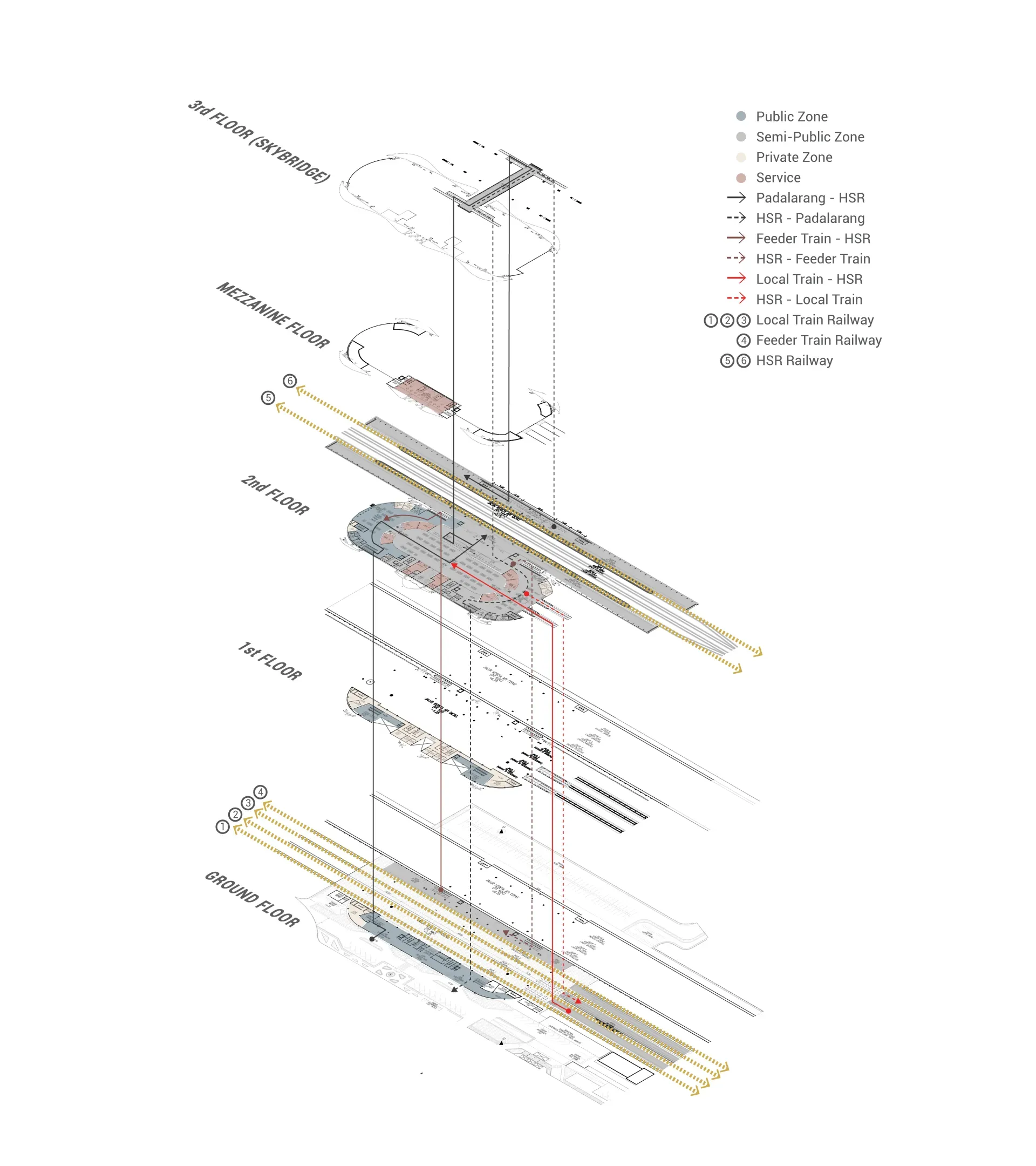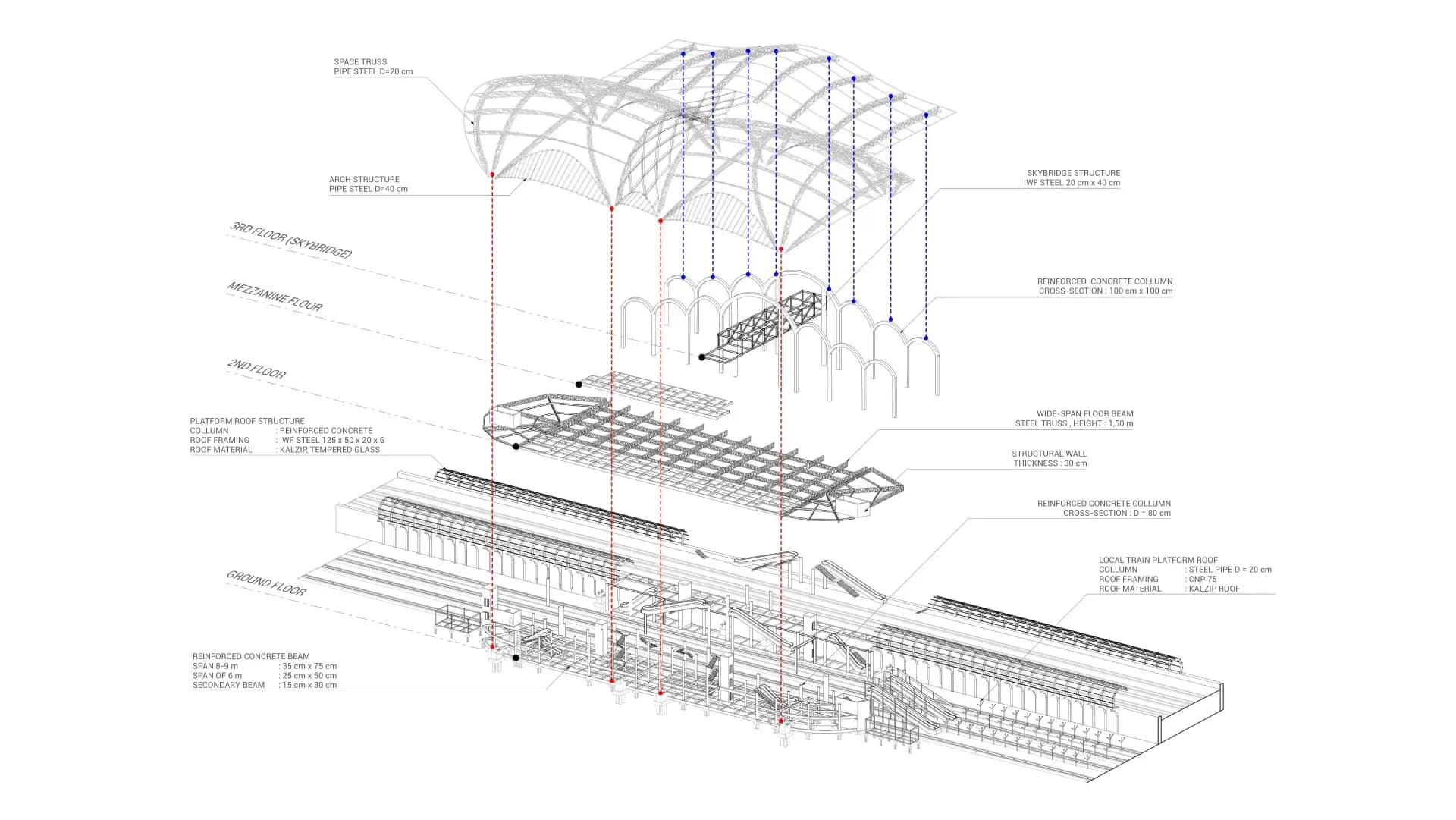Padalarang Interlink Station
Padalarang Interlink Station is defined by its wide-span trusses, arched forms, and elevated platforms that integrate speed and structure. Designed to connect high-speed, feeder, and local trains, it responds to complex circulation with clarity and precision.








- StatusConceptual
- Project TypePublic Infrastructure
- Year2022
- SitePadalarang, West Java, Indonesia
- Site Area14.954 sqm
- Building Area8.986 sqm
- AwardsSAA Award 40 Nominee
The Jakarta–Bandung High-Speed Railway is more than just infrastructure. It is a national milestone that marks Indonesia’s momentum toward modernizing its mass transportation system. While it connects two major cities in name, the train does not actually stop in central Bandung. Instead, Padalarang, a town rich in history and infrastructure, was chosen as the pivotal hub. The new station stands beside the existing Padalarang Station, which dates back to 1884, reinforcing the idea of continuity between the past and future.
Located on Cihaliwung Road in West Bandung Regency, the site accommodates eight railway lines:
- 3 rails for Local Trains (serving Cimahi, Cikudapateuh, Kiaracondong, Cicalengka, Galunggung, Rancaekek)
- 1 rail for Feeder Trains (connecting Padalarang and Bandung)
- 4 rails for High-Speed Trains (traveling up to 350 km/h, stopping at Halim, Karawang, Padalarang, and Tegalluar)
The architectural concept centers on expressing this national momentum through a modern and futuristic design language, while respectfully coexisting with the historic station. Dominated by arched forms in both elevation and floor plan, the new building creates a striking silhouette that contrasts with the old, yet allows it to shine. The use of white materials throughout the building provides a neutral backdrop that frames the heritage station with elegance and simplicity.
The main hall features a wide-span roof with a space truss system, creating a spacious, column-free waiting area. The exposed structure enhances both function and aesthetic appeal, while a glass roof section invites daylight deep into the interior, reinforcing the theme of transparency and clarity.
Due to the limited land area, circulation and integration were carefully considered. A dedicated tunnel for private vehicles leads to the parking zone in front of the heritage station, preventing traffic conflicts with Damri buses, taxis, and online motorcycle taxis, all of which are integrated into the site’s transport network.
One of the most unique architectural elements is the elevated high-speed train platform, set 8 meters above ground level. Unlike conventional public platforms, this one features a semi-circular cross-section, subtly tilted to create an intuitive central gathering space for passengers. The closed side incorporates glass walls, allowing daylight into the platform while maintaining enclosure. The structure is built with reinforced concrete, with added thickness at the foundation to support its elevated form and unique geometry.
Padalarang Station, in its new form, is more than a train stop. It is a celebration of movement, memory, and modernity. A place where Indonesia’s railway legacy meets the promise of high-speed futures
